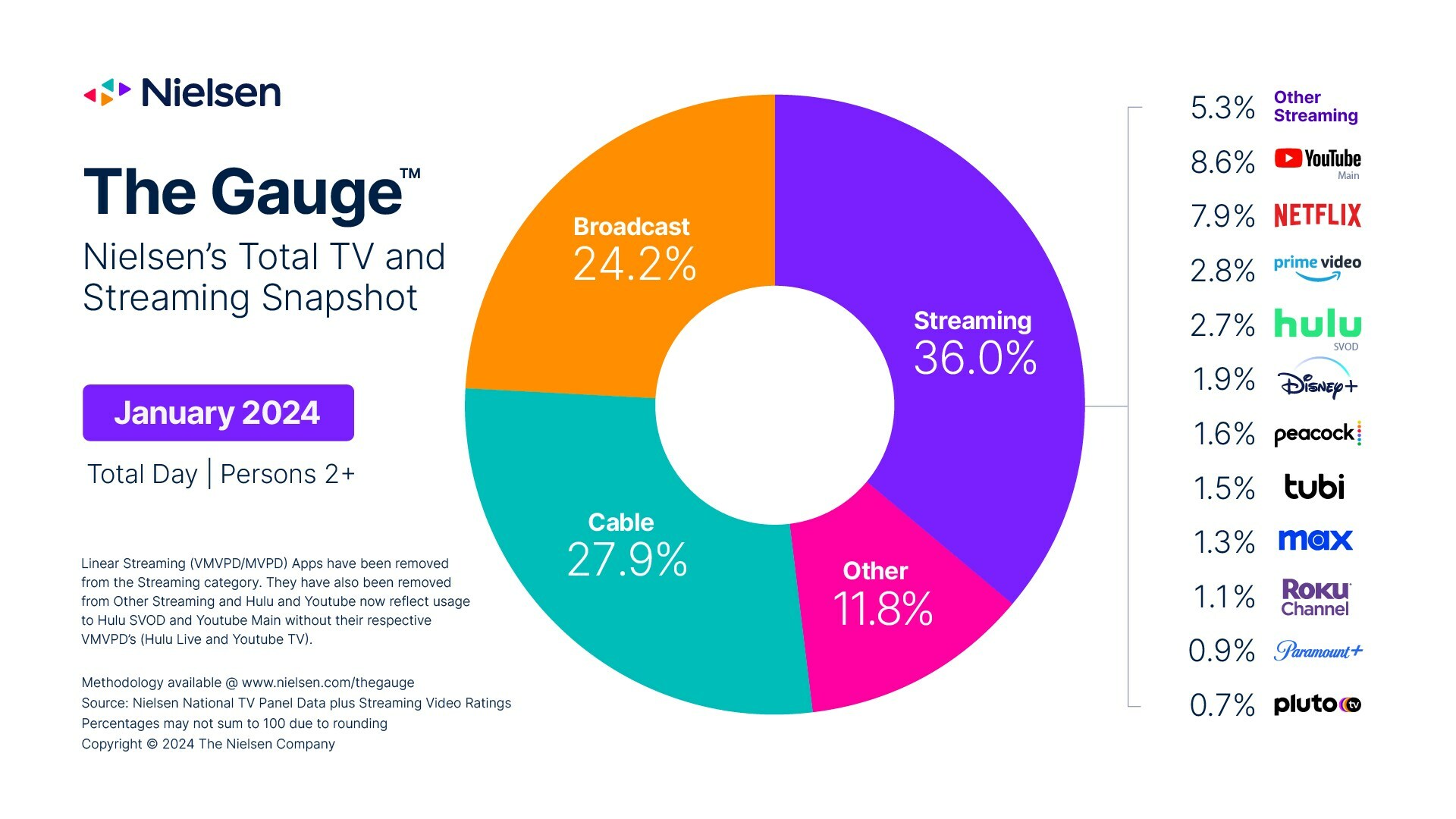Nielsen: TV Viewing Hits Four-Year High in January
Heavy streaming traffic, NFL playoffs, colder temperatures and return of broadcast scripted programming boosted viewing

NEW YORK—January TV viewing hit a four-year high in January, according to Nielsen's The Gauge, with Peacock’s exclusive streaming of a NFL playoff game playing a notable role in the viewing spike.
Nielsen said that January 13 marked the most-streamed day in history totaling 40.8 billion minutes streamed—a feat driven by Peacock's coverage of the first exclusively streamed NFL playoff game.
Other key factors in driving increased TV viewing included an abundance of high-volume streaming days, NFL playoffs, colder temperatures, and the long-awaited return of scripted broadcast programs, Nielsen said.
Broadcast viewing was up 7.1% in January, which bumped its share to 24.2% of total TV.
In addition to the record streaming levels seen on January 13, Nielsen noted that January produced nine of the 10 highest daily streaming levels ever.
Yearly TV usage is typically at its peak in January, Nielsen noted, with January 2024 viewing up 3.7% versus December.
Nielsen said this monthly increase stands out, as viewing levels were 1.4% higher than in January 2023, which not only had a longer reporting period (5 wks. vs. 4 wks.), but also included the peak viewing week between Christmas and New Year's, and was not in short supply of new programming.
Get the TV Tech Newsletter
The professional video industry's #1 source for news, trends and product and tech information. Sign up below.
Additionally, January 2024 included three of the top 10 days of TV usage since the inception of The Gauge in May 2021 (Jan. 1, 14 and 28), and marked the highest monthly TV usage total since January 2020 (excluding 2020 pandemic lockdown months).
In a month of many high-impact days, streaming usage was up 4.1% over December to account for 36.0% of TV usage. Peacock led platforms from a growth perspective with a 29% monthly increase, pushing its share to a platform-best 1.6% of TV.
YouTube notched its 12th consecutive month as having the largest share among streaming services, with 8.6% of TV usage. From a content perspective, streaming original titles appeared to show signs of revival in January following a dominant year for acquired content in 2023: Netflix's “Fool Me Once” was the first original to top the streaming charts since May 2023, totaling 6.5 billion viewing minutes across the month, and Reacher on Prime Video held the No. 4 spot with 4.3 billion minutes.
Broadcast viewing also showed significant gains. It was up 7.1% in January, which bumped its share to 24.2% of total TV. Sports viewing had the greatest impact on the category, notching a 36% monthly viewing increase to account for 28% of all broadcast viewing. Broadcast drama viewing was up over 20% following some of the first new content releases of the season, led by new episodes across NBC's Chicago franchise.

Cable viewing increased 2.7% over December, but fell to 27.9% of TV due to the larger increase of overall TV usage. ESPN's broadcast of the College Football Playoff game between Michigan and Alabama led all cable programs this month, followed by six more NFL and college football games. News viewing was up 8% and topped all cable genres this month, led by the Iowa Town Hall on Fox News Channel (No. 8 cable program in January, excluding sports commentary).
Linear (live TV) streaming via MVPD (multichannel video programming distributors) and vMVPD (virtual multichannel video programming distributors) apps represented 6.2% of total television usage in January. Linear streaming is included in the appropriate broadcast or cable category, and is not included in the streaming category, Nielsen said.
George Winslow is the senior content producer for TV Tech. He has written about the television, media and technology industries for nearly 30 years for such publications as Broadcasting & Cable, Multichannel News and TV Tech. Over the years, he has edited a number of magazines, including Multichannel News International and World Screen, and moderated panels at such major industry events as NAB and MIP TV. He has published two books and dozens of encyclopedia articles on such subjects as the media, New York City history and economics.

